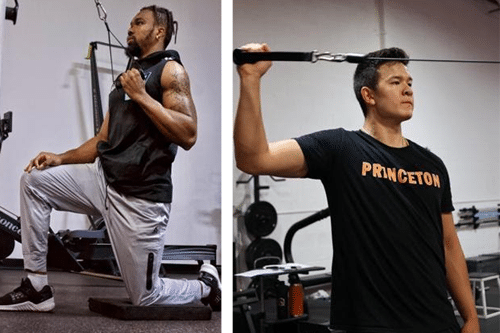Benefits of Unilateral Training

Unilateral vs Bilateral
The compound exercises are the most bang for your buck exercises when it comes to gaining maximal strength and power but individuals can benefit extremely from unilateral training. Over time, if you only train with bilateral movements it can lead to to imbalances at some point. The reason is, if you are training heavy enough sometimes you will have reps where technique breaks down and you begin to compensate. This can create inefficient bar paths, overuse injuries, and sometimes even stalled progress. By addressing certain weaknesses with unilateral exercises, individuals can better develop and maintain muscle mass, connective tissues strength, and joint integrity.
Rehabilitation
Compared to bilateral training, unilateral training facilitates rehabilitation to a greater degree. When you train one side of the body the other side is also stimulated. Indirect stimulation of the non-working side of the body via working the opposite side improves strength in the injured area. This is called cross-education of muscles, and is a neural event. The brain pathways that are used for the primary unilateral exercise stimulate the same muscles on the opposite side of the body. The key to applying cross-education is to recognize that it works for the same muscles on the opposite side of the body only. Furthermore, unilateral training also helps improve balance and coordination.
Unilateral Training Is For Everyone
Everyone can benefit from unilateral training especially athletes. Most sports are played with unilateral components (throwing, running, jumping, etc.), so structural imbalances are definitely created. Unilateral exercises can help improve bilateral deficits and can be simple modifications from common bilateral movements. They can be implemented within the most formal training programs after main compound lifts to ensure optimal development. By taking the time to address unilateral concerns, coaches and athletes can improve muscular and movement pattern imbalances, potentially prevent injury, and stimulate new muscular growth development. Unilateral training should be implemented in every program. If you have questions on unilateral training and how to best implement them within your regimen, please contact us.
Jermaine Hough
-B.S. Exercise science
-Minor in nutrition
-BPS Level 1


